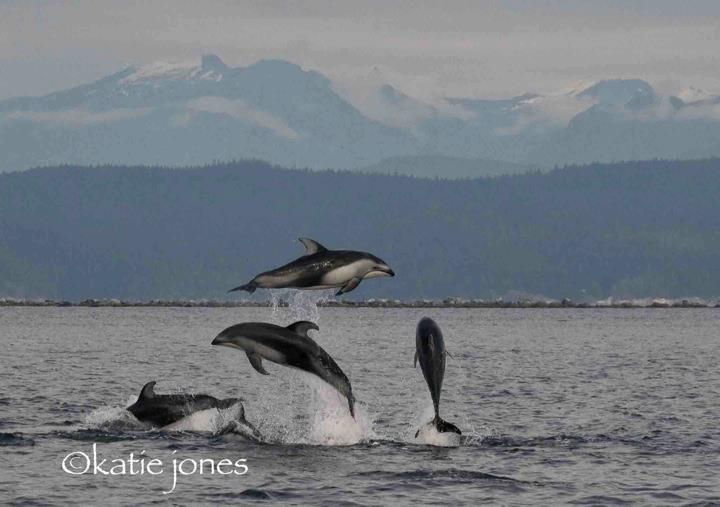Is it too late for the dainty red phalarope, the tufted puffin or the cackling goose?
The birds are just three of 23 new species of Salish Sea wildlife that were added to federal, state and provincial “species of concern” lists over the past two years, according to a study just released by the SeaDoc Society.
“Even if we just consider the 23 newly listed species, this is the greatest jump seen since we began tracking this in 2002,” said SeaDoc Society director and study co-author Joe Gaydos, PhD. The total number of “species of concern” considered by the study has nearly doubled, from 64 in 2008 to 113 by January of this year.
Scientists are now concerned about the future of 15 mammals, 56 birds, 37 fishes, two reptiles and three invertebrates that rely on the Salish Sea. Newly listed are coho, chum and pink salmon, surf smelt, the snowy owl, belted kingfisher, brant, horned grebe, American kestrel, killdeer and more. Gaydos said in the past he’s seen one or two species added every two years, but “nothing like 23.
”Twenty-six of the 49 new species were added not because they are newly endangered or threatened, but because it was newly discovered that they use the Salish Sea for some part of their life cycle.The study defined species of concern as “native species, sub-species or ecologically significant units that warrant special attention to ensure their conservation.”
The species were listed by one or more of four jurisdictions: the Province of British Columbia, the State of Washington, the Canadian Federal Government or the United States Federal Government. Designations vary by jurisdiction to include “endangered,” “threatened,” and “sensitive” status. The study also included species that are “candidates” for special status listing. Gaydos said their goal was to “cast as wide a net as possible … to identify species that were in decline enough to warrant listing review.” It also takes time and money to get species listed – Gaydos said candidates like the Western Grebe and Tufted Puffin have been “candidates” for nearly 10 years.
“For both species we have data documenting precipitous declines but the state has just not had the manpower to do a status review to get them listed,” he said. SeaDoc has funded and written the status reviews necessary to get the two species (and the Clark’s Grebe) listed in Wash. state. Gaydos also said Washington state does not have the capability to list marine invertebrates and fishes as anything beyond “Candidate” status, regardless of the data.
‘All is not well’ in the Salish Sea
Gaydos and co-author Nicholas Brown say the dramatic rise in listings is an indicator of ecosystem health. “It’s encouraging that people are paying attention,” Gaydos said. “But it is a little scary; it points to, ‘all is not well in the garden.’ One-third of the birds and mammals in the Salish Sea are either endangered or listed as threatened.”
He said studies attribute the decline mainly to the cumulative effects of habitat loss, contaminants and overharvest. Efforts are needed at the ecosystem level, since many of the species depend on the same things to recover: good water quality and quantity, sufficient fresh water and healthy forage fish populations. The two also say it’s clear present efforts won’t stem the losses.
“…the number of species of concern for this ecosystem is likely to increase if listing efforts remain consistent for all four jurisdictions,” the study abstract concludes. “Increased and improved bi-national efforts to recover declining populations of species and recover this ecosystem are urgently needed to stop the insidious loss of species and ecosystem decay.”



